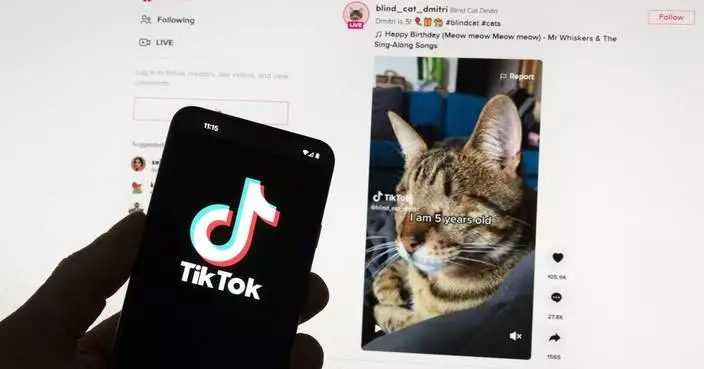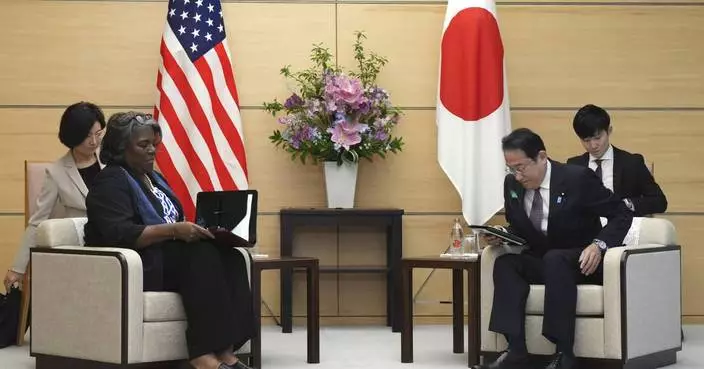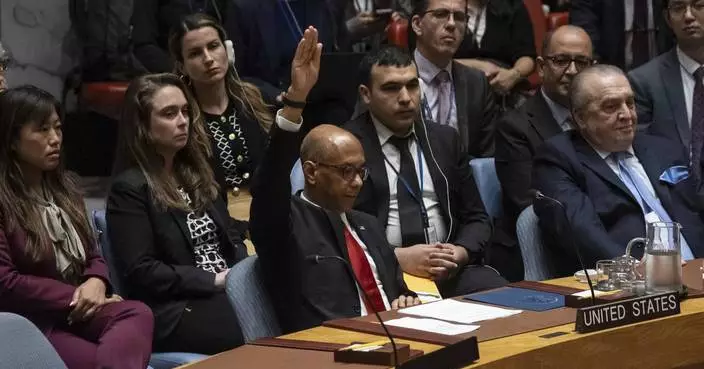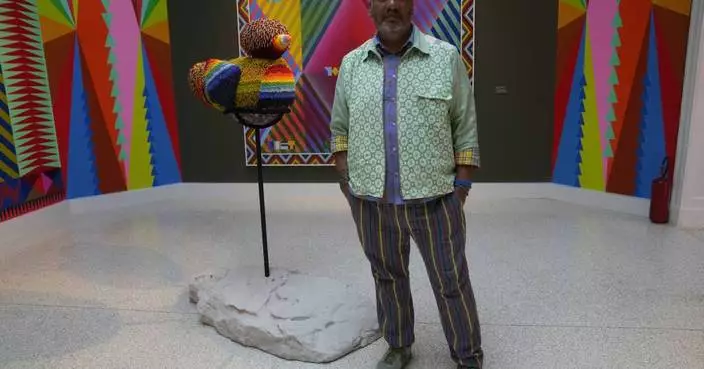The Mormon church on Friday celebrated the 40th anniversary of reversing its ban on black people serving in the lay priesthood, going on missions or getting married in temples, rekindling debate about one of the faith's most sensitive topics.
The number of black Mormons has grown but still only accounts for an estimated 6 percent of 16 million worldwide members. Not one serves in the highest levels of global leadership.
Click to Gallery
The Mormon church on Friday celebrated the 40th anniversary of reversing its ban on black people serving in the lay priesthood, going on missions or getting married in temples, rekindling debate about one of the faith's most sensitive topics.
The Church of Jesus Christ of Latter-day Saints has worked to improve race relations, including calling out white supremacy and launching a new formal alliance with the NAACP, but some black Mormons and scholars say discriminatory opinions linger in some congregations from a ban rooted in a belief that black skin was a curse.
Scholars said the essay included the church's most comprehensive explanation for the ban and its 1978 reversal, which leaders say came from a revelation from God.
A fellow group member, LaShawn Williams, said she finds comfort in her belief that the ban was a "policy of people, not a policy of God," made during a racist time.
President Russell M. Nelson said comprehending true brotherhood and sisterhood can inspire people to "build bridges of cooperation instead of walls of segregation."
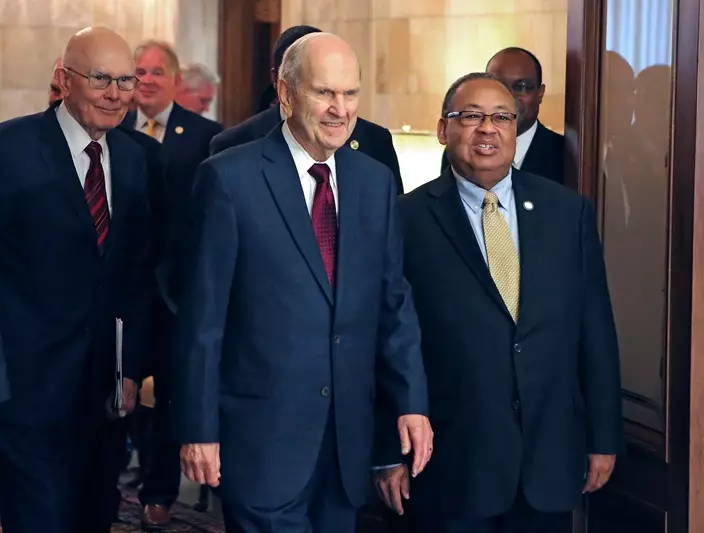
FILE - In this May 17, 2018, file photo, Mormon church President Russell M. Nelson, center, and Leon W. Russell, chairman of the NAACP board of directors, right, walk into a news conference, in Salt Lake City. (AP Photo/Rick Bowmer, File)
The Church of Jesus Christ of Latter-day Saints has worked to improve race relations, including calling out white supremacy and launching a new formal alliance with the NAACP, but some black Mormons and scholars say discriminatory opinions linger in some congregations from a ban rooted in a belief that black skin was a curse.
In a 2013 essay , the church disavowed the reasons behind the ban and condemned all racism, saying the prohibition came during an era of great racial divide that influenced early church teachings. Blacks were always allowed to be members, but the nearly century-long ban kept them from participating in many important rituals.
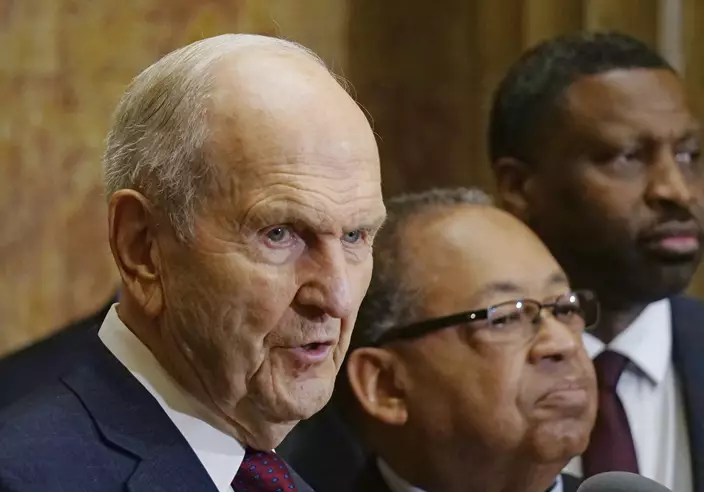
FILE - In this May 17, 2018, file photo, shows Mormon church President Russell M. Nelson, left, speaking as Leon W. Russell, chairman of the NAACP board of directors, center, and Derrick Johnson, president of the NAACP, look on during a news conference, in Salt Lake City. (AP Photo/Rick Bowmer, File)
Scholars said the essay included the church's most comprehensive explanation for the ban and its 1978 reversal, which leaders say came from a revelation from God.
But it didn't include an apology, leaving some unsatisfied.
"A lot of members are waiting for the church just to say, 'We were wrong,'" said Phylicia Norris-Jimenez, a 30-year-old black Mormon and member of the grass-roots Black LDS Legacy Committee, a group of women who are organizing a conference Saturday in Utah to honor the legacy of black Mormon pioneers.
Norris-Jimenez said non-black church members still struggle with how to talk about the ban or understand the pain it causes. She said the anniversary celebration honors something that should have never existed but that it's a good gesture and hopefully leads to more discussions about race.
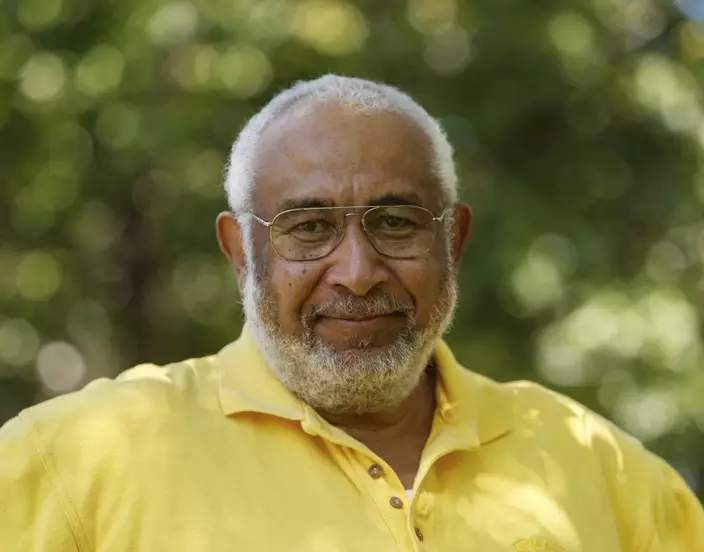
This June 5, 2013, photo shows Darius Gray, co-founder a support organization founded in 1971 for black Mormons called the Genesis Group, in Midvale, Utah. The Mormon church's celebration Friday, June 1, 2018, night of the 40th anniversary of its reversal of a ban on blacks in the lay priesthood is rekindling discussions about one of the faith's most sensitive topics. Gray, said the Mormon church and its doctrine aren't racist but that racism lingers in the religion as it does in the culture. (Trent Nelson/The Salt Lake Tribune via AP)
A fellow group member, LaShawn Williams, said she finds comfort in her belief that the ban was a "policy of people, not a policy of God," made during a racist time.
She and her three children are the only black members of her congregation in Orem, Utah, and she tries to talk about race issues regularly with the teenagers she teaches in Sunday school.
Williams, an assistant professor in social work at Utah Valley University, would like an apology.
"If we preach repentance, we should definitely embody it," she said.
The theme of the anniversary celebration in Salt Lake City was "Be one," a reference to a Mormon scripture. Gladys Knight, one of the most famous black Mormons, performed, and top church leaders gave speeches.
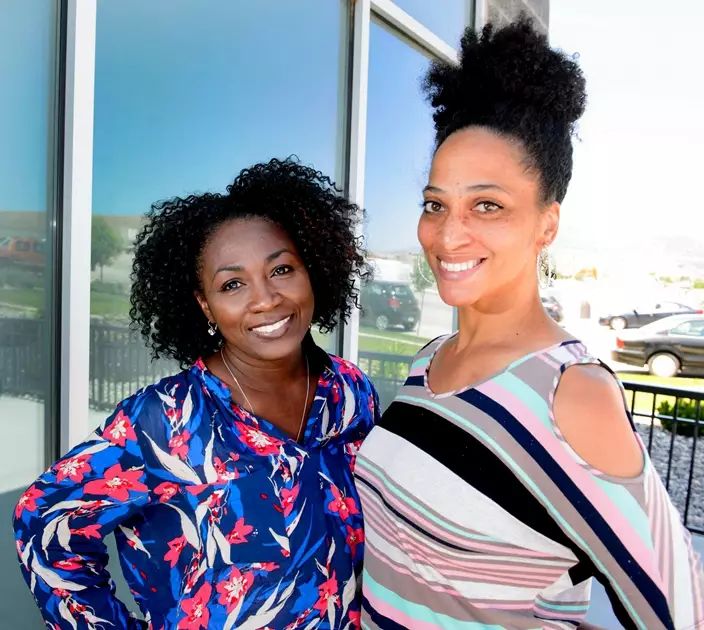
This June 2, 2017, photo, shows Mormon women Tamu Smith, left, and Dr. LaShawn Williams in Lehi, Utah. The Mormon church's celebration Friday night, June 1, 2018, of the 40th anniversary of its reversal of a ban on blacks in the lay priesthood is rekindling discussions about one of the faith's most sensitive topics. Williams, an assistant professor in social work at Utah Valley University, would like an apology. “If we preach repentance, we should definitely embody it,” she said. (Steve Griffin/The Salt Lake Tribune via AP)
President Russell M. Nelson said comprehending true brotherhood and sisterhood can inspire people to "build bridges of cooperation instead of walls of segregation."
Nelson's first counselor, Dallin H. Oaks, acknowledged the "pain and suffering" the ban caused while urging members to "look forward in the unity of our faith."
Prior to event, Ahmad Corbitt, a church employee who led the effort to organize the event, said the celebration was "a call to the entire church, and by extension, the entire world, to let go of prejudices and come together as one unified family."
Corbitt declined to address a church apology, saying the faith is focused on a forward-looking approach to unity.
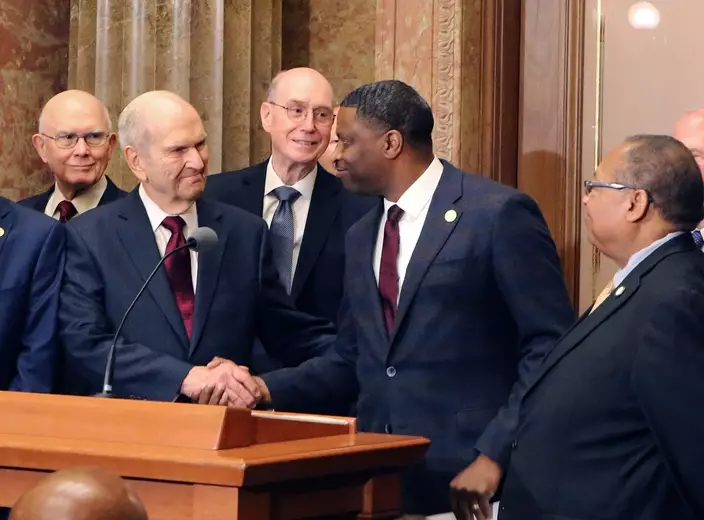
FILE - In this May 17, 2018, file photo, Mormon church President Russell M. Nelson shakes hands with Derrick Johnson, president of the NAACP during a news conference, in Salt Lake City. The Mormon church on Friday, June 1, 2018, will celebrate the 40th anniversary of reversing its ban on black people serving in the lay priesthood, going on missions or getting married in temples, rekindling debate about one of the faith’s most sensitive topics. (AP Photo/Rick Bowmer, File)
Darius Gray, co-founder of the Genesis Group that supports black Mormons, said the church and its doctrine aren't racist but racism lingers in the faith as it does in society.
He said he's been plagued by calls from Mormons concerned about how they're being treated, which he attributes to a rise in racism in the U.S. since President Donald Trump was elected.
He said he wouldn't be opposed to an apology for the ban but that he's more interested in helping the faith make progress in rooting out racism. Gray, who helped plan Friday's event, said it's a step toward healing.
"An apology is here today and gone tomorrow," Gray said. "More significant is what an organization does long term. The LDS church has been moving forward and changed its paradigm in massive ways."
The Utah-based church doesn't provide ethnic or racial breakdowns of its members, but independent Mormon researcher Matt Martinich said those of primarily African descent account for about 6 percent of worldwide members.
In the U.S., blacks account for about 1 to 3 percent of 6.6 million Mormons, according to Pew Research Center surveys done in the last two decades.
It's not the only faith that struggles with a lack of black members in its U.S. congregations: The United Methodist Church, Catholic Church and Judaism also have similarly low rates, according to a 2014 Pew Research Center study .
Mormons probably shouldn't wait for a rare apology from church leaders, said W. Paul Reeve, a Mormon studies professor at the University of Utah. The church seems to be trying to walk a tight rope by disavowing past beliefs while not apologizing for the ban to avoid members questioning other doctrine they think should be changed, he said.
"What else are they wrong about? Are they wrong about gay marriage? Are they wrong about female ordination?" Reeve said. "If they got race and the priesthood wrong, what else could they be wrong about? I think that's part of the fear."
CHICAGO (AP) — The closure of Wadsworth Elementary School in 2013 was a blow to residents of the majority-Black neighborhood it served, symbolizing a city indifferent to their interests.
So when the city reopened Wadsworth last year to shelter hundreds of migrants without seeking community input, it added insult to injury. Across Chicago, Black residents are frustrated that long-standing needs are not being met while the city's newly arrived are cared for with a sense of urgency, and with their tax dollars.
“Our voices are not valued nor heard,” says Genesis Young, a lifelong Chicagoan who lives near Wadsworth.
Chicago is one of several big American cities grappling with a surge of migrants. The Republican governor of Texas has been sending them by the busload to highlight his grievances with the Biden administration’s immigration policy.
To manage the influx, Chicago has already spent more than $300 million of city, state and federal funds to provide housing, health care, education and more to over 38,000 mostly South American migrants who have arrived in the city since 2022, desperate for help. The speed with which these funds were marshaled has stirred widespread resentment among Black Chicagoans. But community leaders are trying to ease racial tensions and channel the public's frustrations into agitating for the greater good.
The outcry over migrants in Chicago and other large Democrat-led cities is having wider implications in an election year: The Biden administration is now advocating a more restrictive approach to immigration in its negotiations with Republicans in Congress.
Since the Wadsworth building reopened as a shelter, Young has felt “extreme anxiety” because of the noise, loitering and around-the-clock police presence that came with it. More than anything, she and other neighbors say it is a reminder of problems that have been left unsolved for years, including high rates of crime, unemployment and homelessness.
“I definitely don’t want to seem insensitive to them and them wanting a better life. However, if you can all of a sudden come up with all these millions of dollars to address their housing, why didn’t you address the homeless issue here,” said Charlotte Jackson, the owner of a bakery and restaurant in the South Loop neighborhood.
“For so long we accepted that this is how things had to be in our communities," said Chris Jackson, who co-founded the bakery with his wife. "This migrant crisis has made many people go: ‘Wait a minute, no it doesn’t.’”
Chicago Mayor Brandon Johnson declined to comment for this story.
The city received more than $200 million from the state and federal government to help care for migrants after Johnson appealed to Illinois Gov. J.B. Pritzker and President Joe Biden. The president will be in Chicago in August to make his reelection pitch at the 2024 Democratic National Convention.
Some Black Chicagoans are protesting the placement of shelters in their neighborhoods, but others aim to turn the adversity into an opportunity.
“Chicago is a microcosm to the rest of the nation,” said the Rev. Janette C. Wilson, national executive director of the civil rights group PUSH for Excellence. Black communities have faced discrimination and underinvestment for decades and are justifiably frustrated, Wilson said. The attention the migrants are receiving is deserved, she added, but it's also a chance for cities to reflect on their responsibility to all underserved communities.
“There is a moral imperative to take care of everybody,” Wilson said.
After nearly two years of acrimony, the city has begun to curb some accommodations for migrants – which has caused its own backlash. The city last month started evicting migrants who overstayed a 60-day limit at shelters, prompting condemnation from immigrant rights groups and from residents worried about public safety.
Marlita Ingram, a school guidance counselor who lives in the South Shore neighborhood, said she is concerned about the resources being shared “equitably” between migrants and longtime residents. But she also believes “it doesn’t have to be a competition” and sympathizes with the nearly 6,000 migrant children now enrolled in Chicago's public schools.
As the potential for racial strife rises, some activists are pointing to history as a cautionary tale.
Hundreds of thousands of Black southerners moved to Chicago in the early 20th century in search of greater freedoms and economic opportunities. White Chicagoans at the time accused them of receiving disproportionate resources from the city, and in 1919 tensions boiled over.
In a surge of racist attacks in cities across the U.S. that came to be known as “Red Summer,” white residents burned large swaths of Chicago’s Black neighborhoods and killed 38 Black people, including by lynching.
“Those white folks were, like, ‘Hell no, they’re coming here, they’re taking our jobs,’'' said Richard Wallace, founder of Equity and Transformation, a majority-Black community group that co-hosted in a forum in March to improve dialogue between Black and Latino residents.
He hears echoes of that past bigotry — intentional or not — when Black Chicagoans complain about the help being given to migrants. “How did we become like the white folks who were resisting our people coming to the city of the Chicago?” he said.
Labor and immigrant rights organizers have worked for years to tamp down divisions between working class communities. But the migrant crisis has created tensions between the city’s large Mexican American community and recently arrived migrants, many of whom hail from Venezuela.
“If left unchecked, we all panic, we’re all scared, we’re going to retreat to our corners,” said Leone Jose Bicchieri, executive director of Working Family Solidarity, a majority-Hispanic labor rights group. “The truth is that this city wouldn’t work without Black and Latino people.”
Black Americans’ views on immigration and diversity are expansive. The Civil Rights Movement was instrumental in pushing the U.S. to adopt a more inclusive immigration policy.
About half of Black Americans say the United States’ diverse population makes the country strong, including 30% who say it makes the U.S. “much stronger,” according to a March poll by The Associated Press-NORC Center for Public Affairs Research.
Many leaders in Black neighborhoods in and around Chicago are trying to strike a balance between acknowledging the tensions without exacerbating them.
“Our church is divided on the migrant crisis,” said the Rev. Chauncey Brown, pastor of Second Baptist Church in Maywood, Illinois, a majority-Black suburb of Chicago where some migrants are living in shelters.
There has been a noticeable uptick of non-English speakers in the pews, many of whom have said they are migrants in need of food and other services, Brown said. Some church members cautioned him against speaking out in support of migrants or allotting more church resources to them. But he said the Bible’s teachings are clear on this issue.
“When a stranger enters your land, you are to care for them as if they are one of your own,” he said.
Matt Brown is a member of the AP’s Race and Ethnicity team. Follow him on social media.
The Associated Press receives support from several private foundations to enhance its explanatory coverage of elections and democracy. See more about AP’s democracy initiative here. The AP is solely responsible for all content.
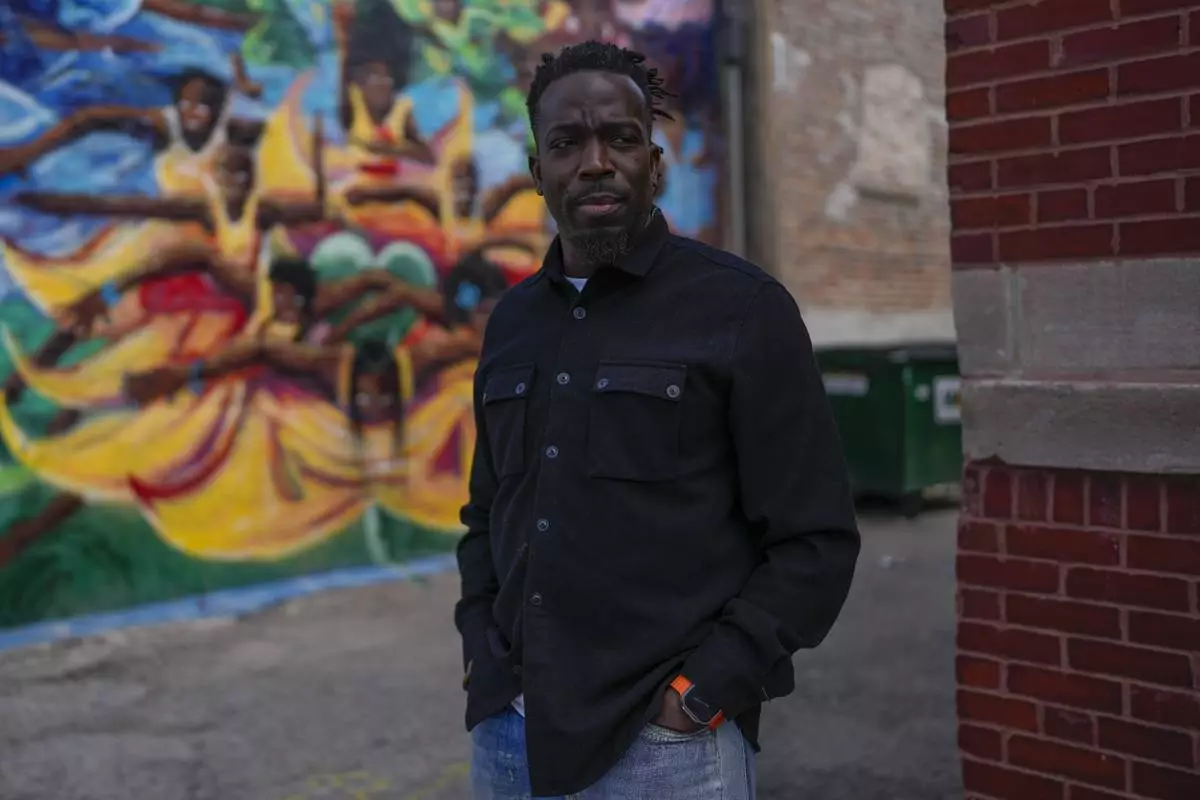
Richard Wallace, founder and director of Equity and Transformation, poses for a portrait at the Westside Justice Center, Friday, March 29, 2024, in Chicago. (AP Photo/Erin Hooley)
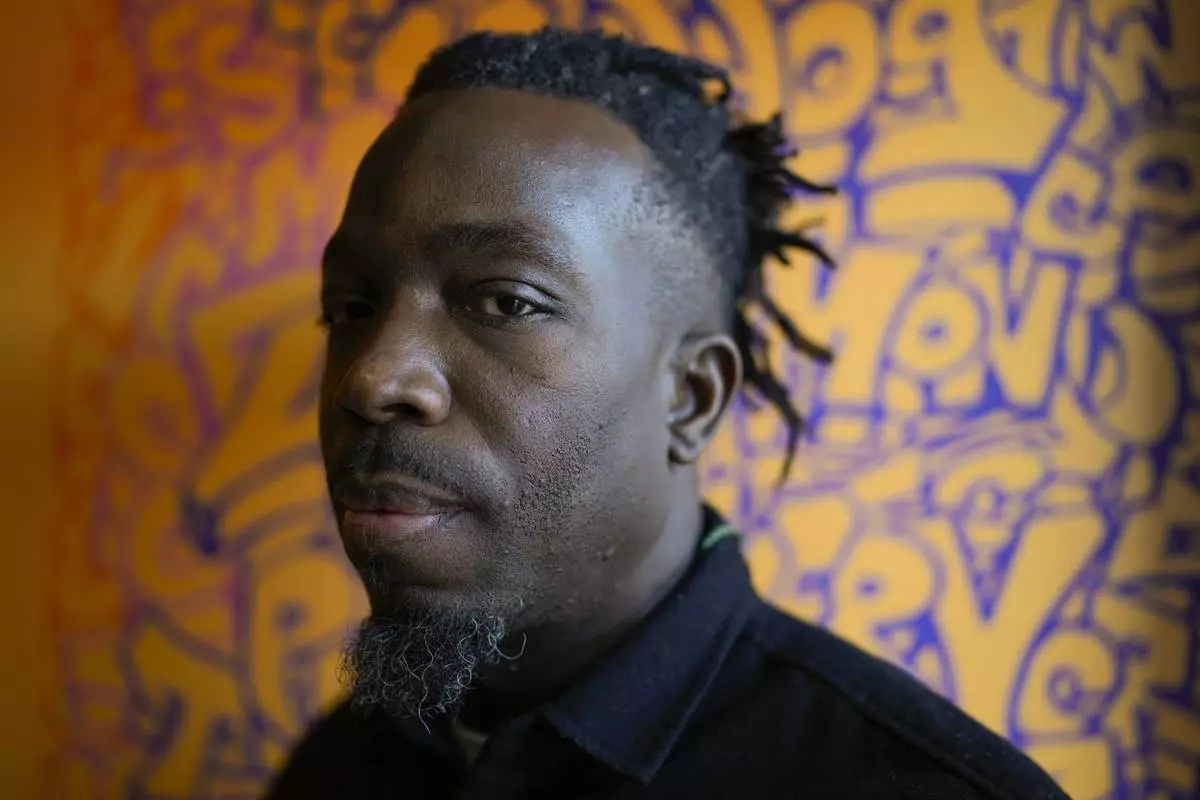
Richard Wallace, founder and director of Equity and Transformation, poses for a portrait at the Westside Justice Center, Friday, March 29, 2024, in Chicago. (AP Photo/Erin Hooley)
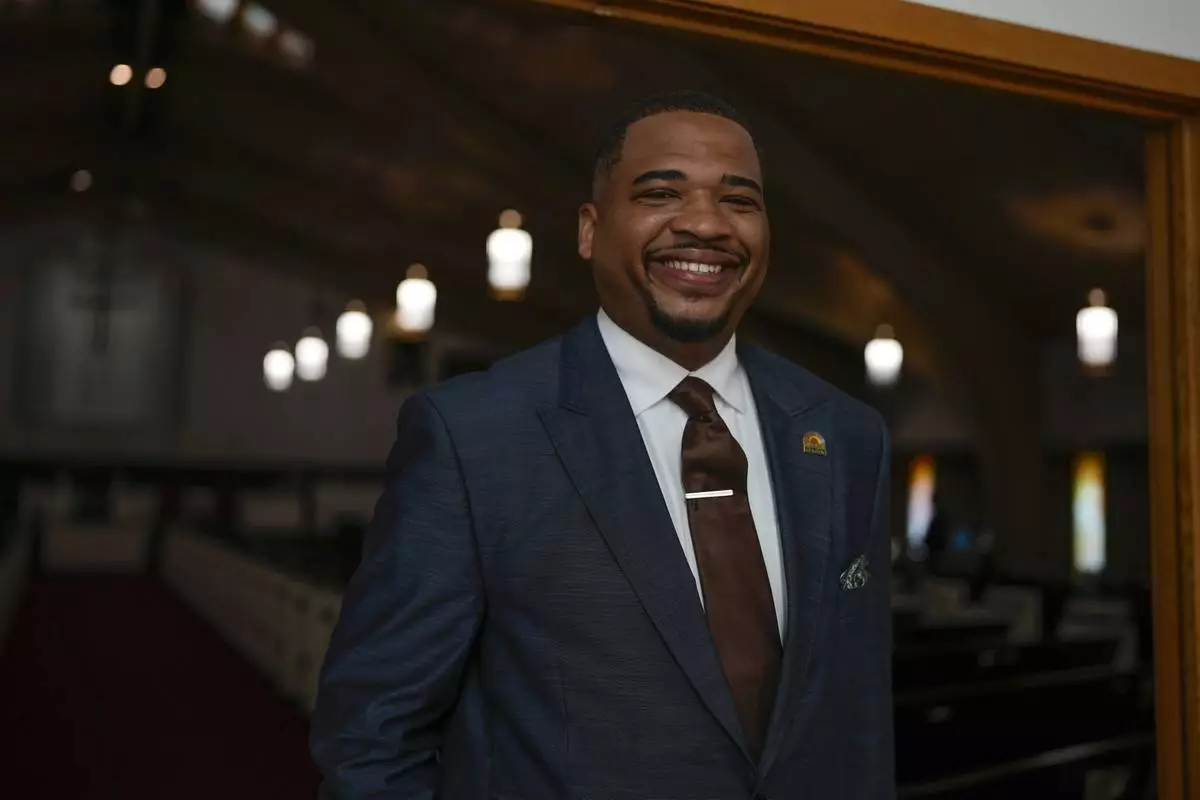
The Rev. Dr. Chauncey Brown poses for a portrait at Second Baptist Church, Sunday, April 14, 2024, in Chicago. (AP Photo/Erin Hooley)
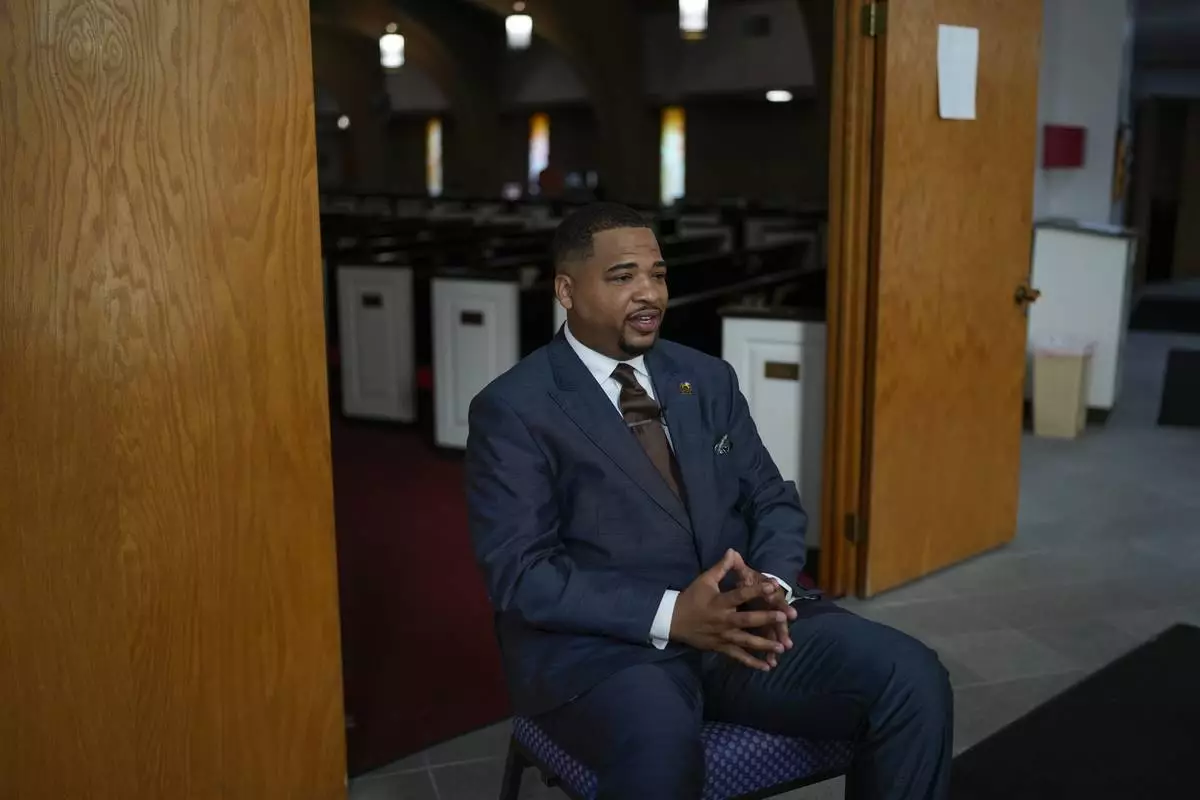
The Rev. Dr. Chauncey Brown speaks during an interview at Second Baptist Church, Sunday, April 14, 2024, in Chicago. (AP Photo/Erin Hooley)
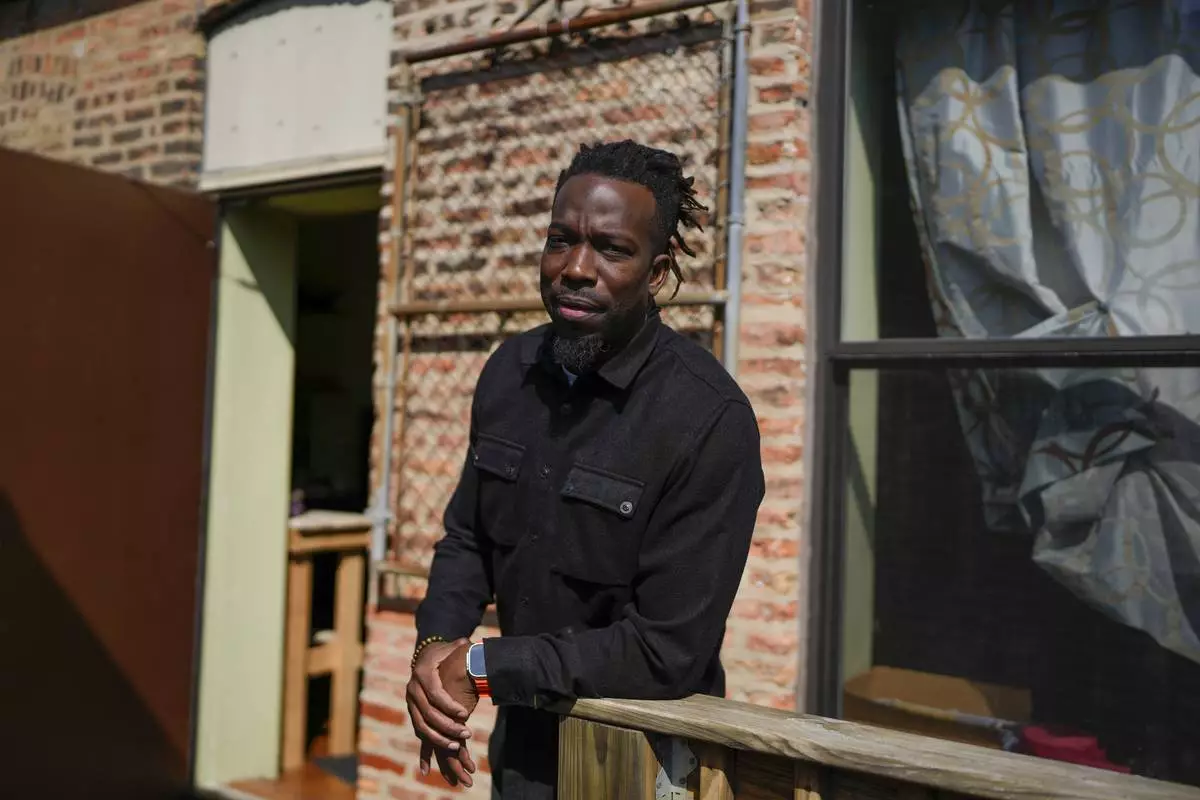
Richard Wallace, founder and director of Equity and Transformation, poses for a portrait at the Westside Justice Center, Friday, March 29, 2024, in Chicago. (AP Photo/Erin Hooley)
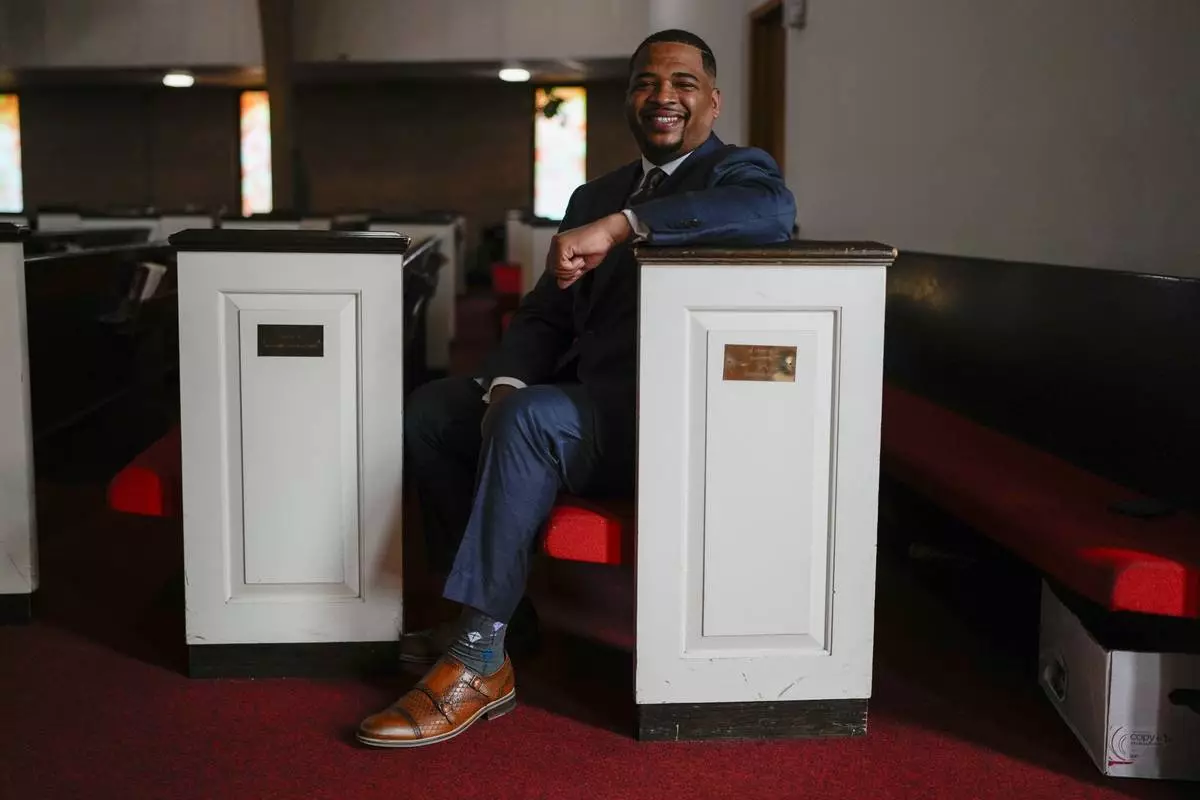
The Rev. Dr. Chauncey Brown poses for a portrait at Second Baptist Church, Sunday, April 14, 2024, in Chicago. (AP Photo/Erin Hooley)














